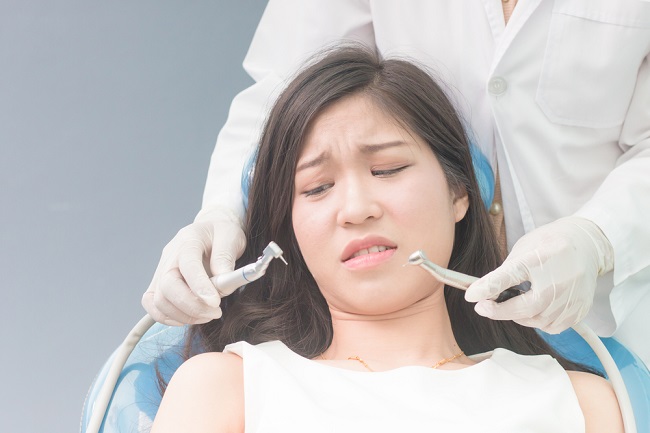Hormone replacement therapy is a treatment to relieve menopausal symptoms that arise due to a decrease in reproductive hormones in women. Menopause occurs when a woman's menstrual cycle stops.

Complaints that can occur due to these hormonal changes are:
- Irregular menstrual cycle
- Feeling hot (hot flashes) and sweat a lot
- Dry pussy
- Heart beat
- Urinating more often
- Hard to sleep
- Worried
- Labile emotions
- Depression.
This decrease in hormones can also result in changes in the pH and composition of the normal flora in the vagina, making women more susceptible to urinary tract infections. In addition, these changes affect bone density so that women are more susceptible to osteoporosis which is at risk of causing fractures.
The severity of menopause symptoms felt by each woman is different. Some women only feel mild menopause symptoms and do not interfere with daily activities, but in some cases, menopause symptoms are felt quite severe and disturbing. To relieve these symptoms, menopausal women can get additional reproductive hormones from outside the body so that the perceived menopause symptoms can be reduced.
In addition to relieving symptoms due to menopause, hormone replacement therapy is also thought to reduce the risk of developing colon cancer, but this needs further research. Hormone replacement therapy can also be used in postmenopausal women who are at high risk for severe osteoporosis, such as those with hyperparathyroidism.
Although the benefits of hormone replacement therapy are quite broad for women of postmenopausal age, this method also carries the risk of causing certain diseases. Some of the diseases that can increase the risk of developing in women undergoing hormone replacement therapy are stroke, deep vein thrombosis, and breast or uterine cancer.
Types of Hormone Replacement Therapy
The hormone to be given is synthetic estrogen, with or without the hormone progesterone. One of the functions of the hormone estrogen is to relieve the symptoms of menopause that are felt. While progesterone serves to prevent the risk of uterine cancer.
Hormone replacement therapy can be in the form of local therapy to relieve vaginal symptoms, or systemic which can treat other symptoms, because the hormones used will circulate throughout the body. Local therapy is done by using hormones in the form of a cream for the vagina, while systemic therapy is done in the form of tablets, gels, or injections.
Therapy will be planned as short as possible so that side effects of therapy can be avoided. Hormone replacement therapy can be used in women who have started experiencing menopause symptoms, which is around the age of 50-59 years. If menopause occurs earlier, for example 40 years, hormone replacement therapy may be given provided there is no history of breast cancer.
Hormone Replacement Therapy Warning
Hormone replacement therapy should not be used by women who have conditions, such as:
- Have a history of breast or uterine cancer
- High triglycerides
- Porphyria
- Miom
- Endometriosis
- Deep vein thrombosis
- Suffering from severe liver disease
- Excessive levels of the hormone estrogen
Menopause and pregnancy have the same symptoms, namely not getting a period. Meanwhile, this hormone replacement therapy should not be given to pregnant women because it has a risk of abnormalities for the fetus (category X). Doctors can first confirm through a pregnancy test, that the patient is not pregnant, before recommending the patient to use hormone replacement therapy.
Hormone replacement therapy is also known to cause side effects, such as:
- Bloated
- Nauseous
- Headache
- mood swings (mood) and emotions
- Vaginal bleeding
- Swelling or hardening of the breast.
Hormone Replacement Therapy Dosage
Estrogen contained in hormone replacement therapy can be in the form of tablets, gels, injections, or used directly into the vagina in the form of creams. The details of the estrogen dosage for hormone replacement therapy are as follows:
| Medicine Form | Drug Contents | Dose | Merek Trade |
| Tablet | Estradiol valerate | 1-2 mg per day. | Progynova |
| Conjugated Estrogen | 0.3 mg, once daily. | Esthero | |
| Gel | 17 - estradiol | Apply once a day, on the inner thigh. | Oestrogel |
| Vaginal cream | Estriol | Apply using a special applicator, every night, for 2-3 weeks. Use can be reduced to 2 times per week, if complaints improve. | Ovestin |
To prevent the risk of uterine cancer due to the use of estrogen for hormone replacement therapy, doctors may combine estrogen with progesterone. This combination of hormones is available in tablet or liquid form. Details of drug dosage can be seen as follows:
| Medicine Form | Dose | Merek Trade |
| Tablet | 1 time a day, for a 28 day cycle | Cyclo-proginova, Angeliq, Femoston |
In addition to using the hormone estrogen, hormone replacement therapy can also be done by taking selective estrogen receptor modulators (SERM). This compound will play a role in preventing and overcoming osteoporosis in postmenopausal women. One example of a SERM class of drugs used as hormone replacement therapy is raloxifene with the trademark Evista. The dose of raloxifene is 60 mg once daily. Raloxifene works by mimicking the action of the hormone estrogen on bone.









